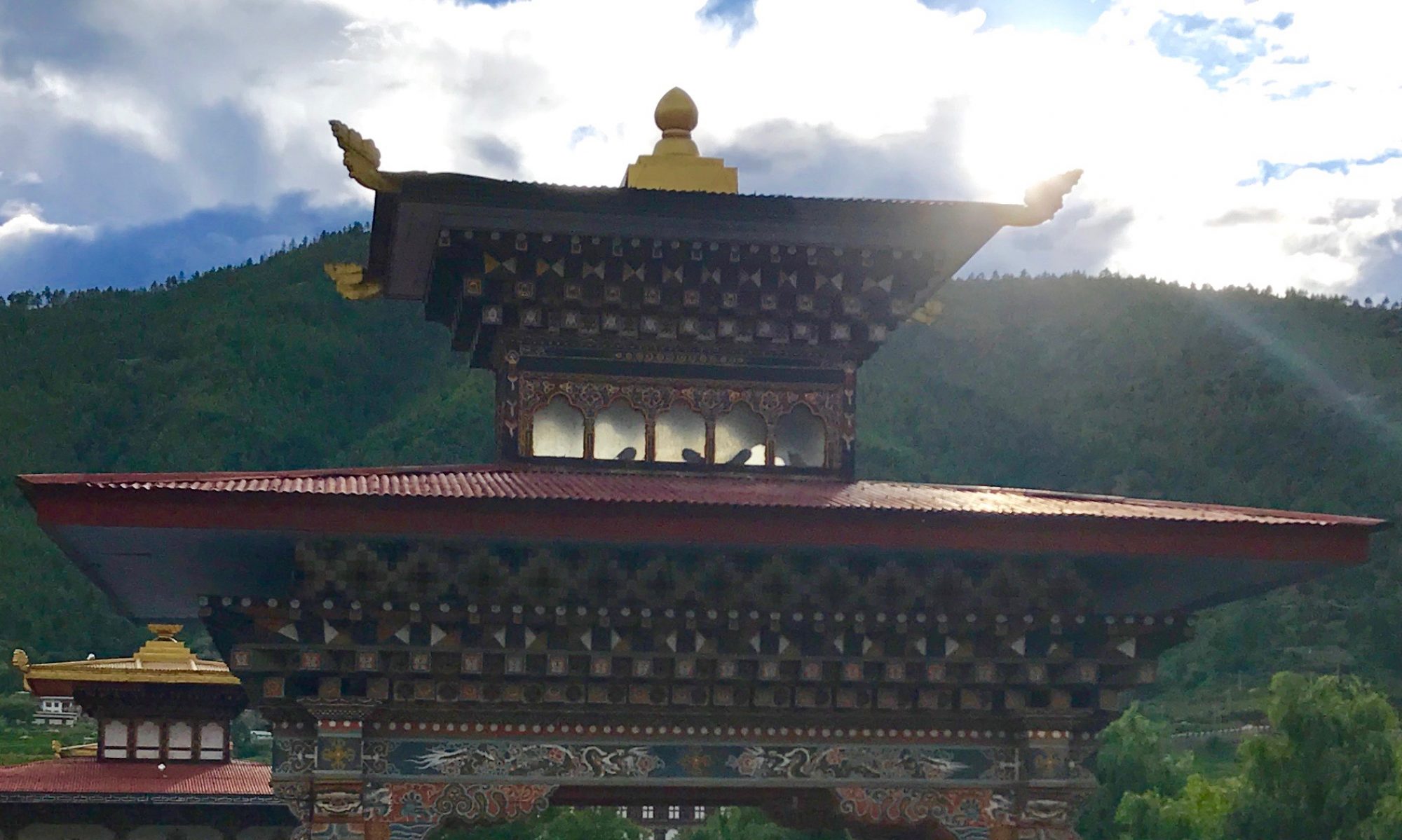The Trongsa dzong was the seat of the royal family before they were still penlops, or regional rulers, before they became the royal family. The meandering building started as a hermitage (!) in 1541, with a small meditation hut built by Ngagi Wangchuk, the grandfather of Zhabdrung Ngawang Namgyal, the man credited with unifying Bhutan. Ngagi Wangchuck built a meditation hut because he found the hoofprint of the horse of a protector deity. Then people gathered around him, creating a “new village” or “trongsa.” Then Zhabdrung came to power and sent an official to bring eastern Bhutan under central control, and that man (Choegyel Mingyur Tenpa) built the dzong in its current form in 1644. There are 23 separate lhakhangs or temples built into the dzong in its ramble down the hillside.
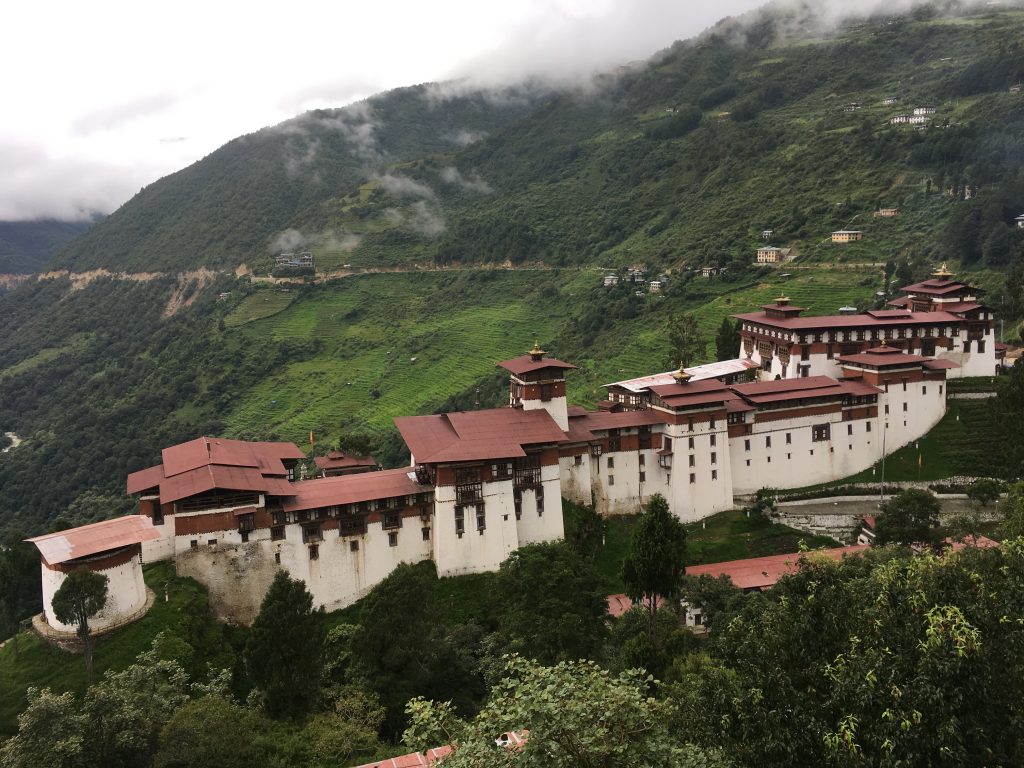
And the whole thing can vanish into the mist in a matter of minutes.
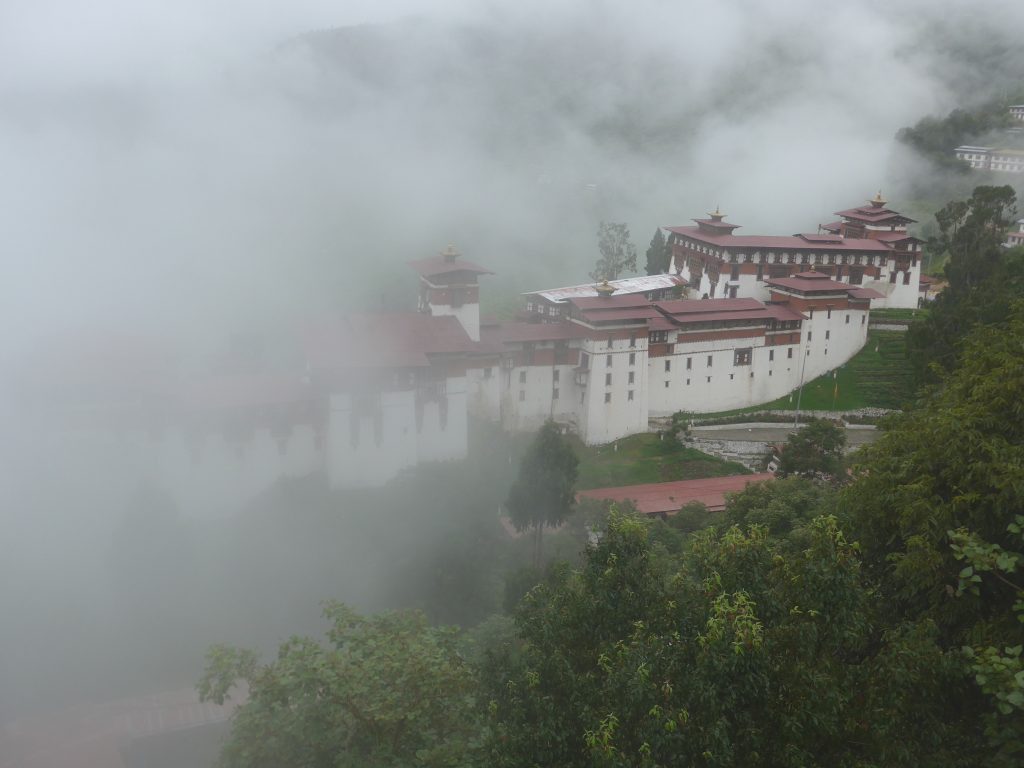
Visible from the other edge of the hotel is a more mundane source of power: the hydroelectric plant nearby.
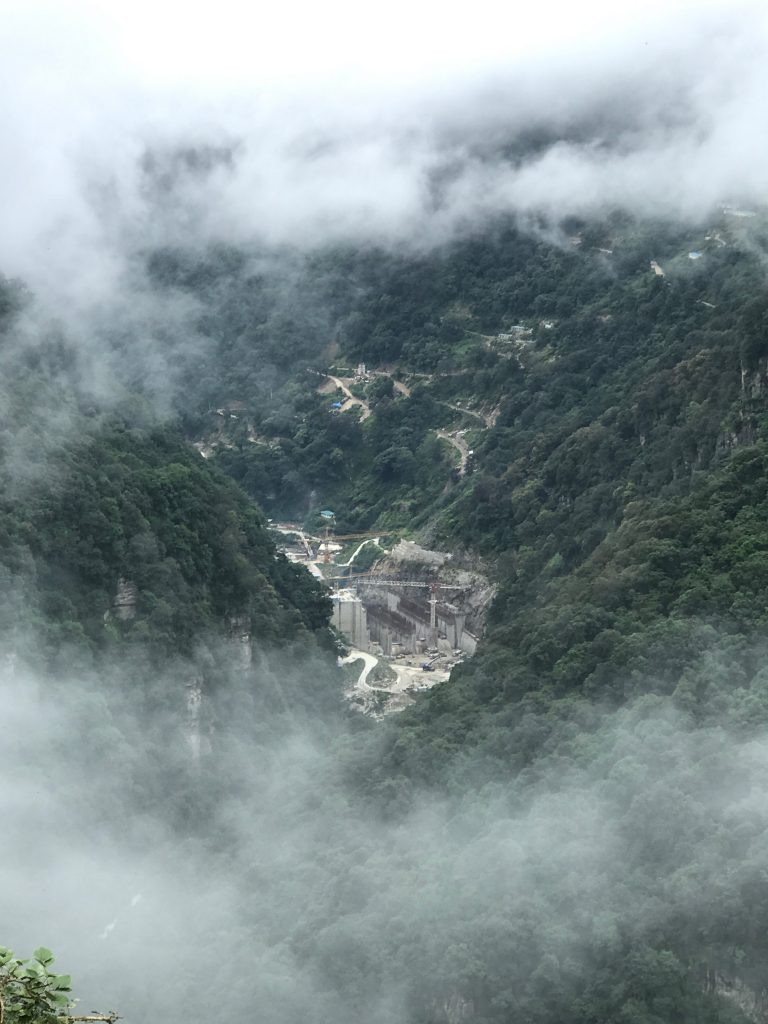
Shortly after leaving Trongsa came the most hair-raising part of our cross-country trek.
We were in a particularly muddy patch of road when we lost traction completely and started sliding towards the edge of the cliff. Ugyen swung the wheel to the left, but the slide continued until we finally stopped (or perhaps paused) very close to the edge. Zoë, on the cliff side of the car, couldn’t see any road out her window: she was just peering down into the abyss. She and I glanced at each other in silence, eyes wide, over Jeremy’s head: he was luckily engrossed in his book. Ugyen put the truck into 4-wheel drive and tried nudging it forward. Once again, we slipped to the right—was there any ground left under our wheels? Zoë was mentally rehearsing ways for us to fling ourselves out of the truck before it plummeted over the edge. Then at last the wheels bit into more solid ground and we started clawing our way back to safety. The underlying problem was a five-foot tall, two-level mud waterfall immediately ahead of us: we had been sliding around in the pool below. Now the challenge was to get up over it. James was thinking we’d all have to get out (into the mud pool) and push, but thankfully Ugyen revved the engine and with much slipping and bumping we finally made it to the top of that particular water feature.
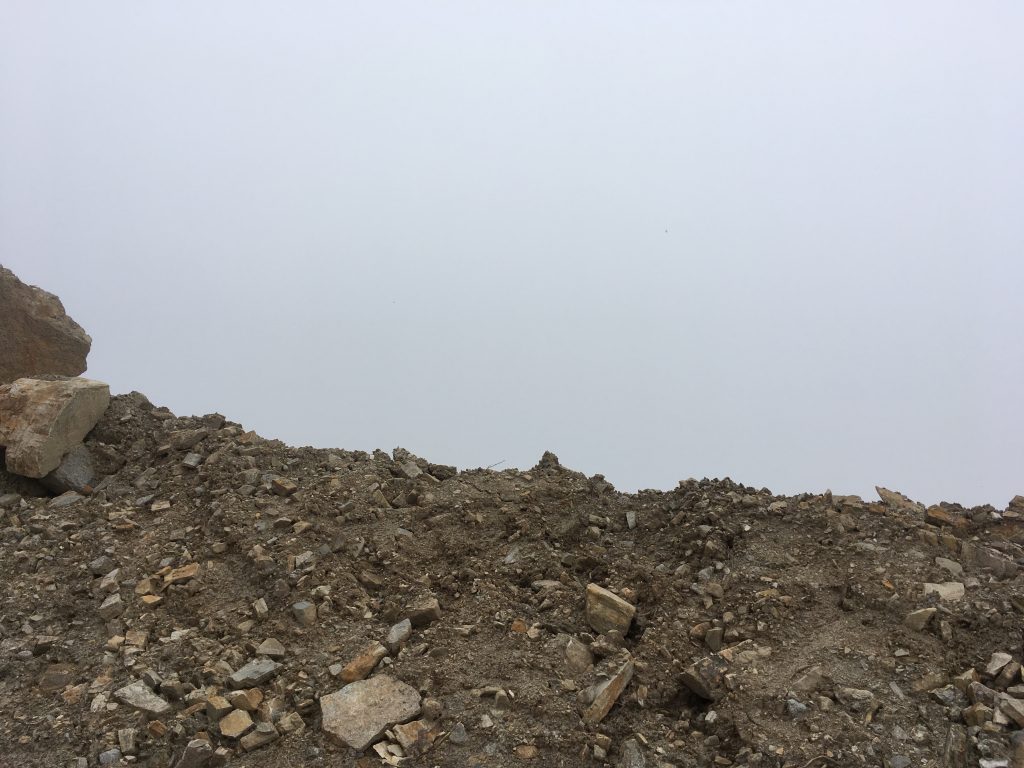
The cliffs kept vanishing into the mist, and the mountains played peek-a-boo most of the way to Mongar.
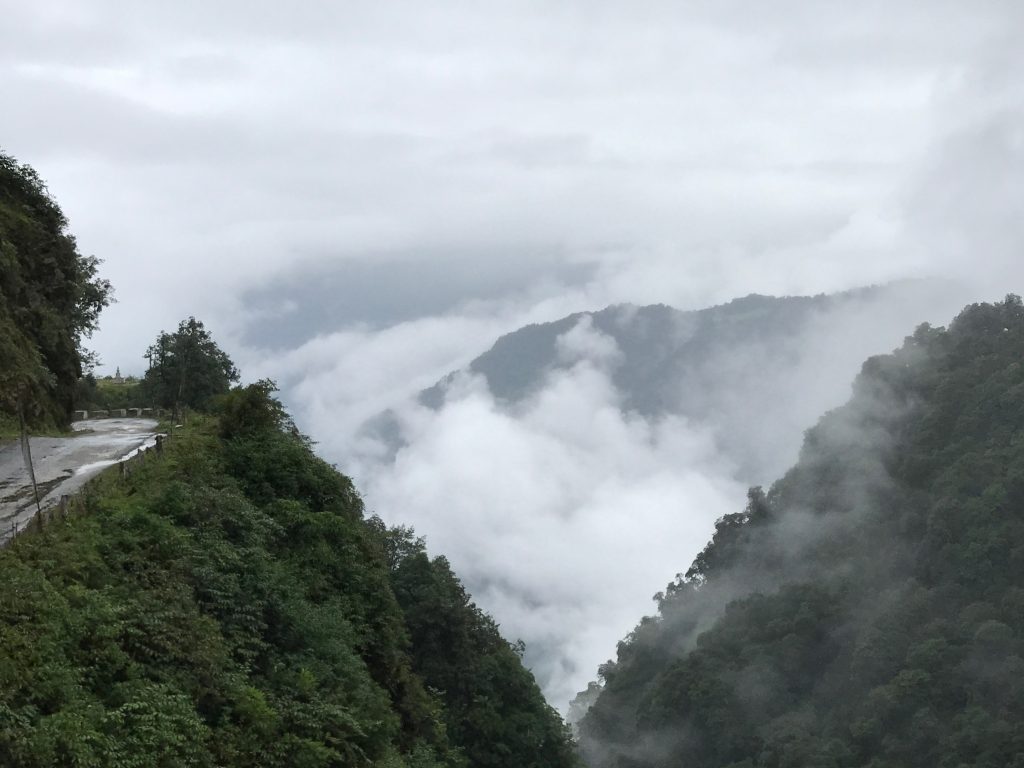
But when a view opens up, it’s remarkable:
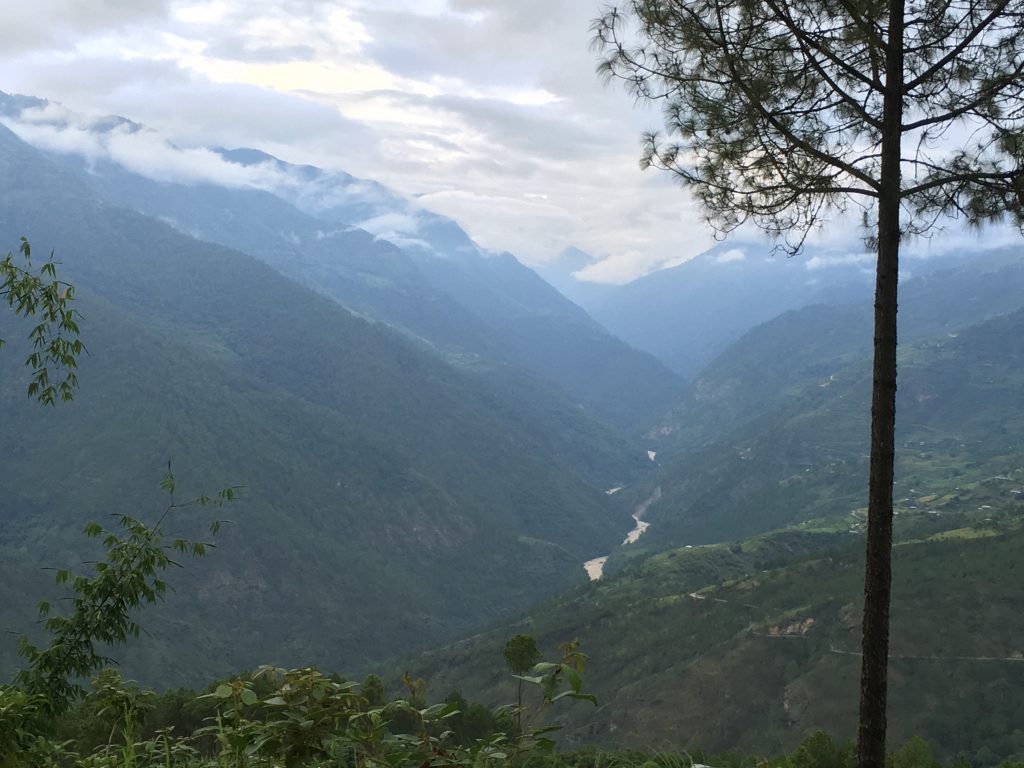
We had been so long on the road that when we came to the Bumthang bypass, we opted for the shorter route, and then found, to our delight, that it was mostly paved! And then we were back on the main (unpaved, muddy) road again.
Most of the way, it seemed as if we were driving through cloudforest:

James particularly liked the prayer wheels turned by the force of falling water:
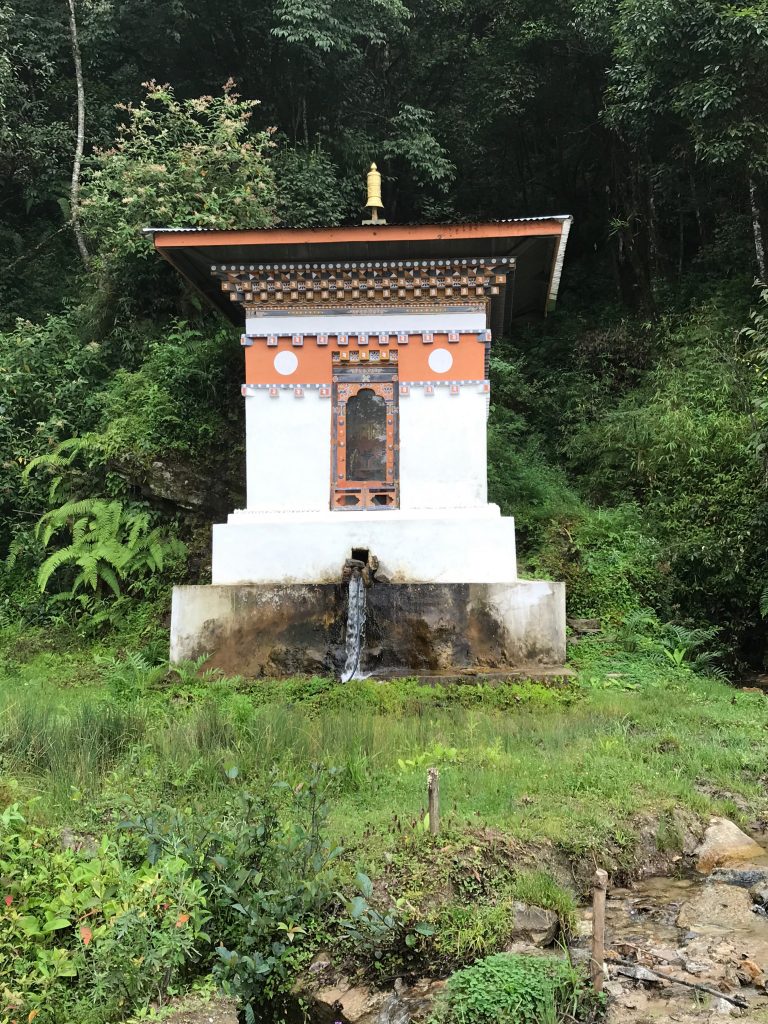
We also liked the bees…
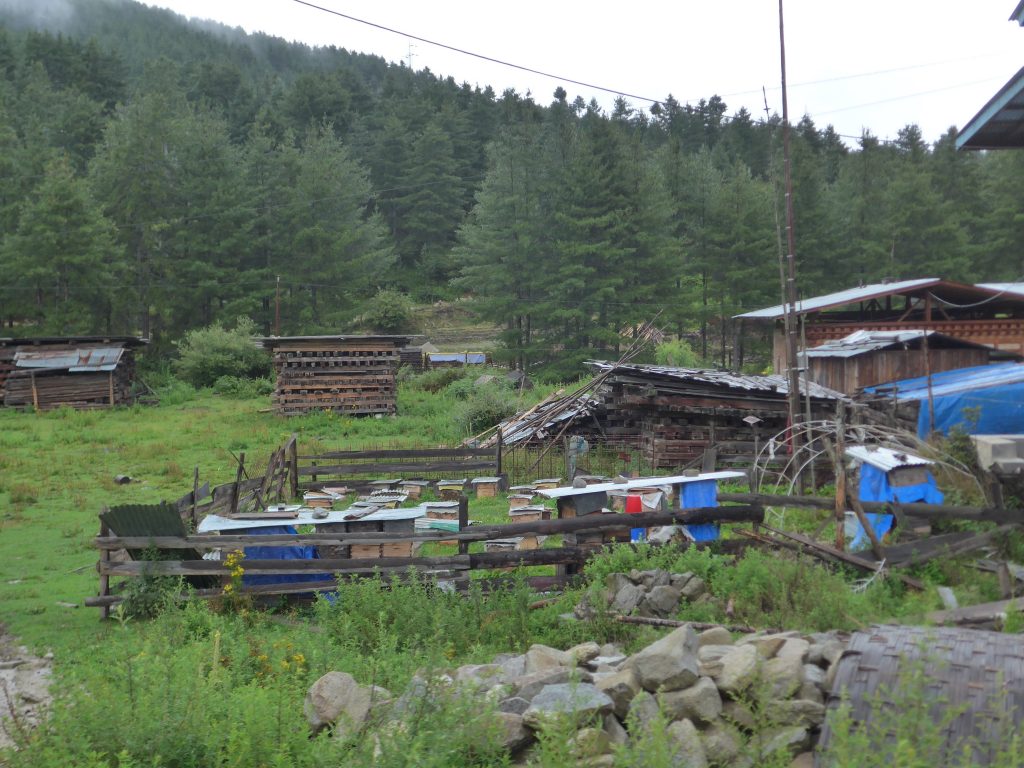
The next pass was Thrumsingh La, with more rhododendron forests abounding (and prayer flags erected in honor of the fourth king).
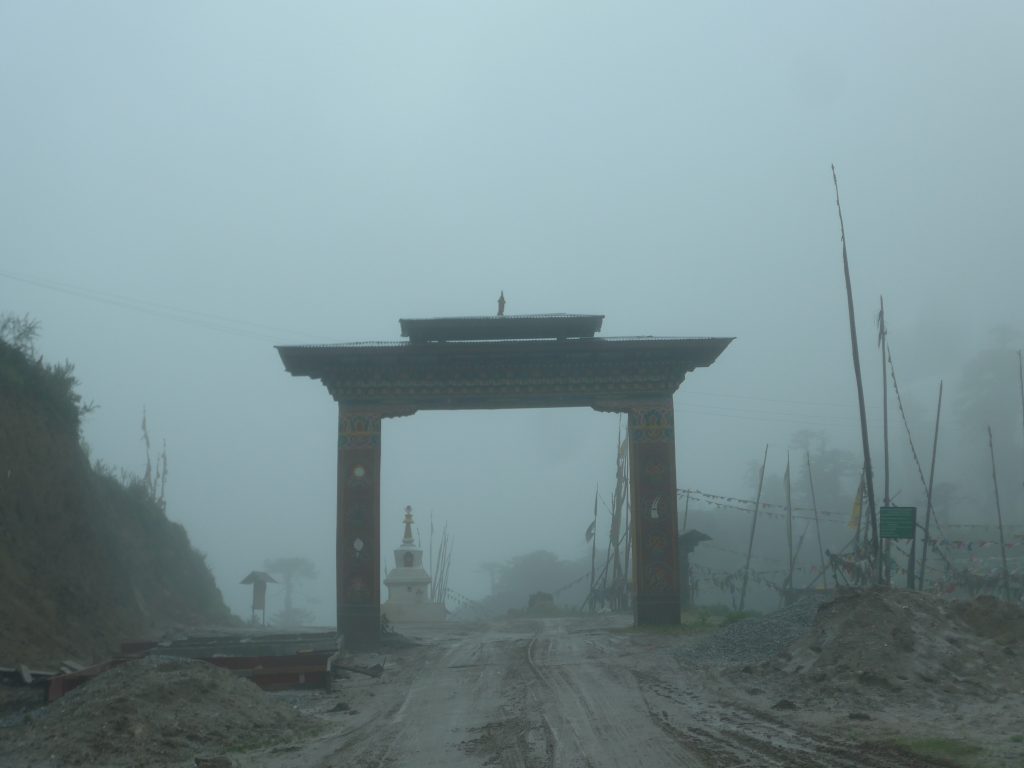
The most striking feature of the day was the Namling waterfall, which we drank in (pun intended; sorry) from both sides.
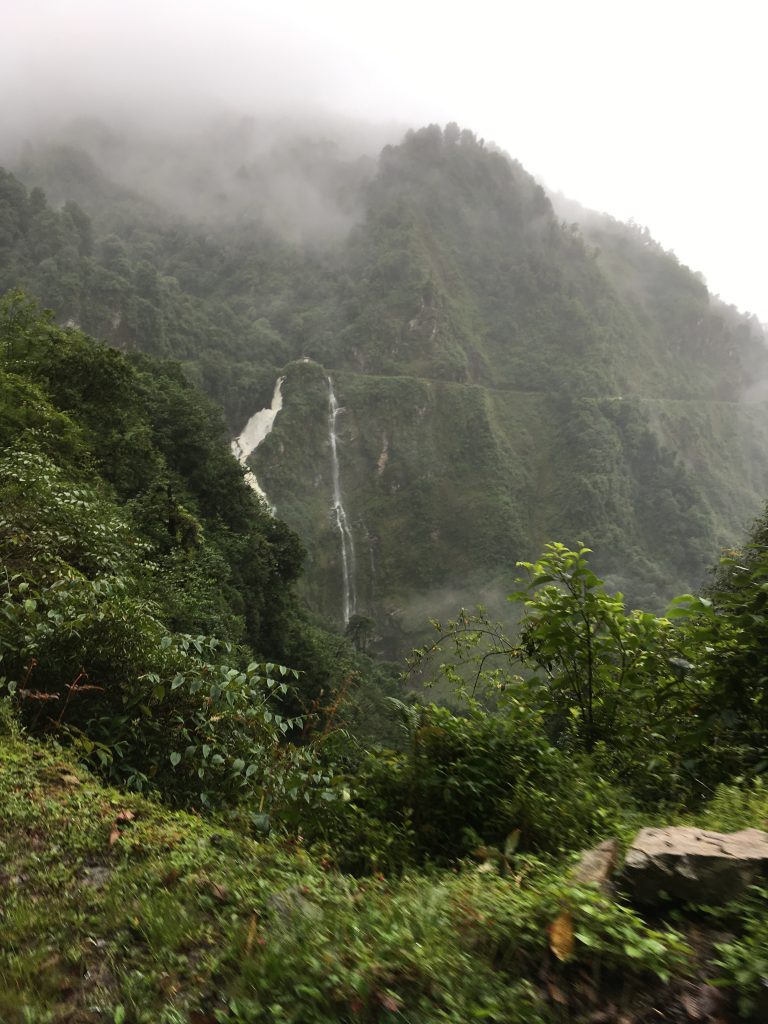
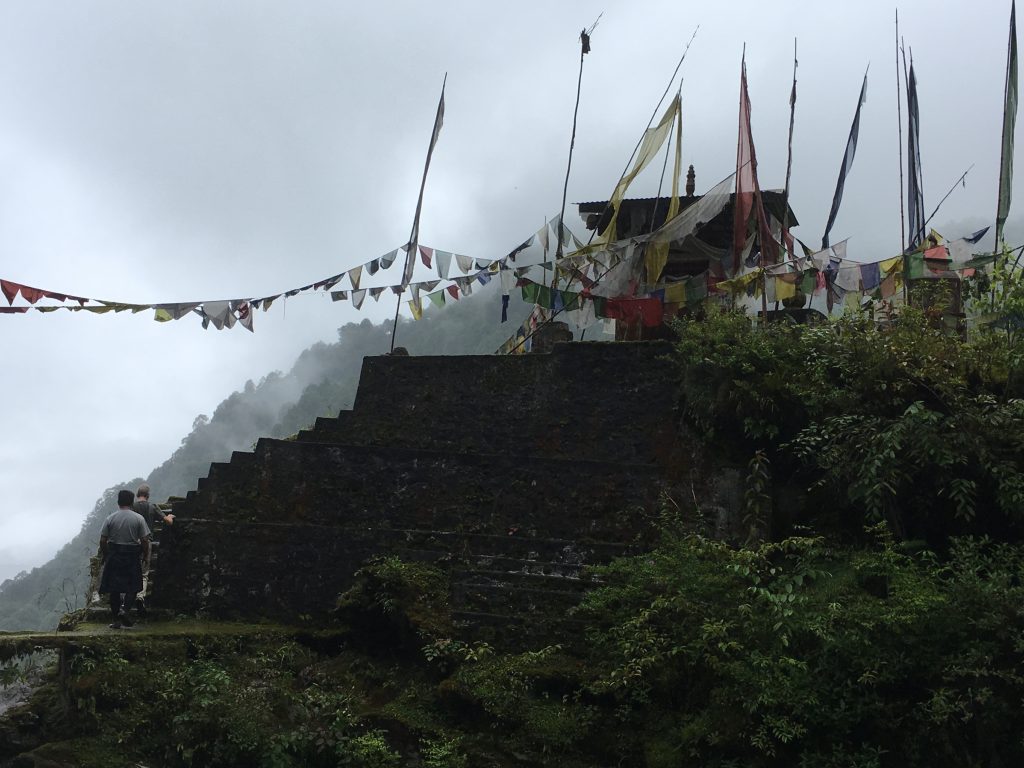
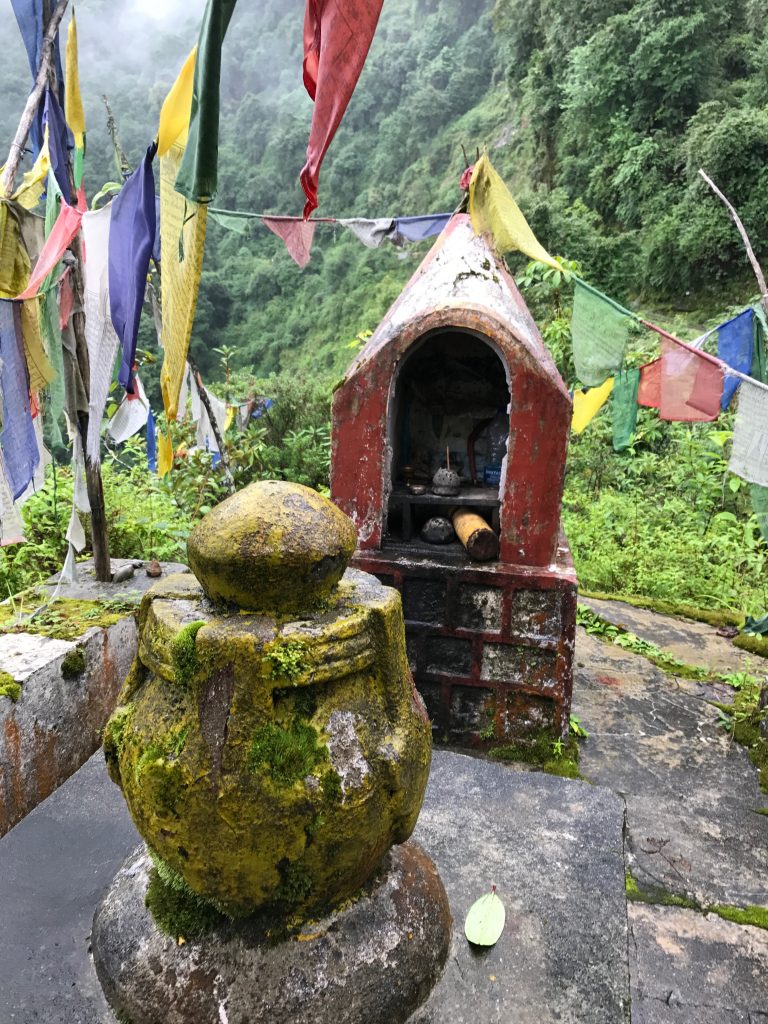
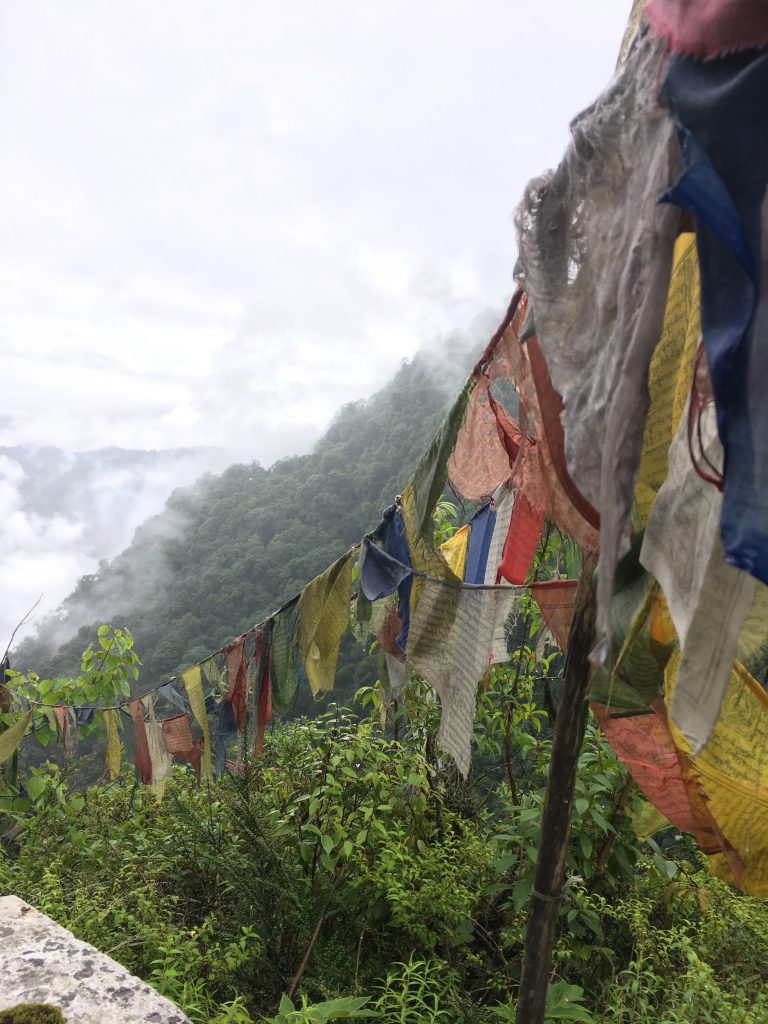
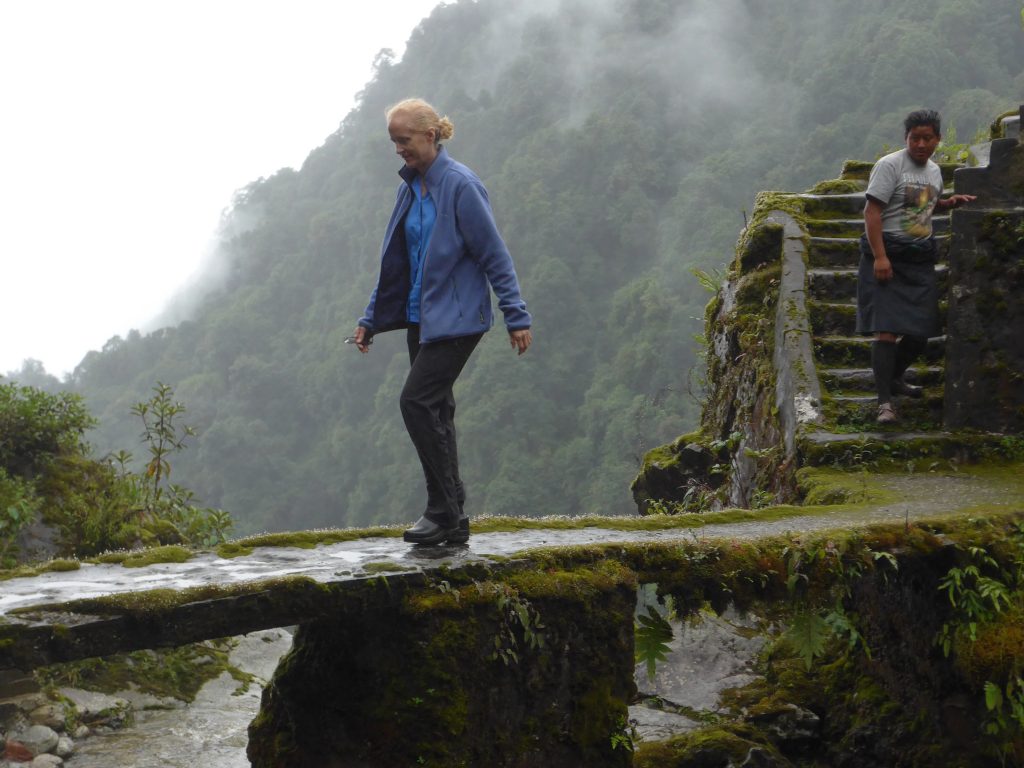
Just a little further down the road was another waterfall. We took a photo to mark our 20th wedding anniversary
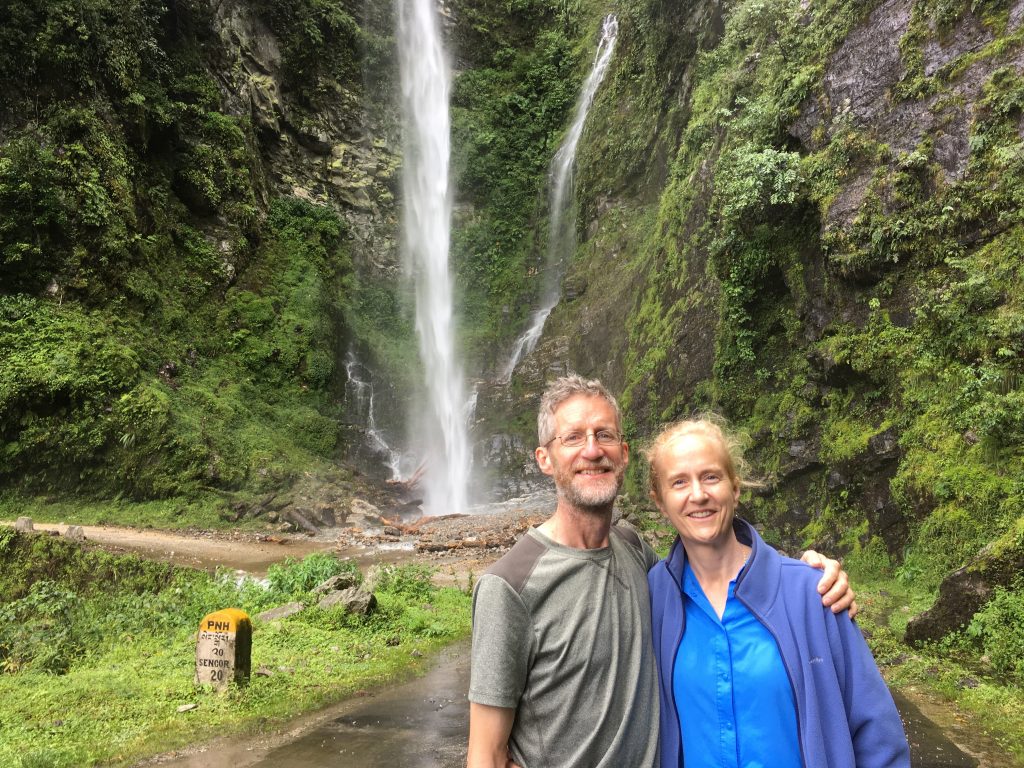
but Zoë’s selfie was perhaps more successful.
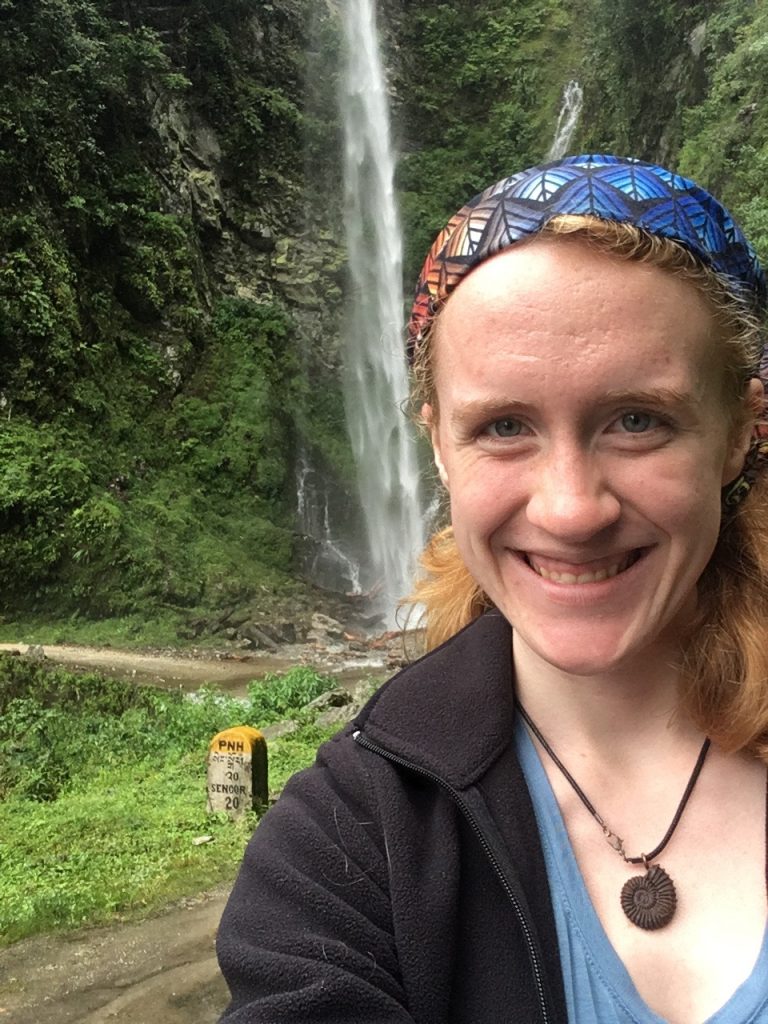
Or there was Jeremy’s approach…
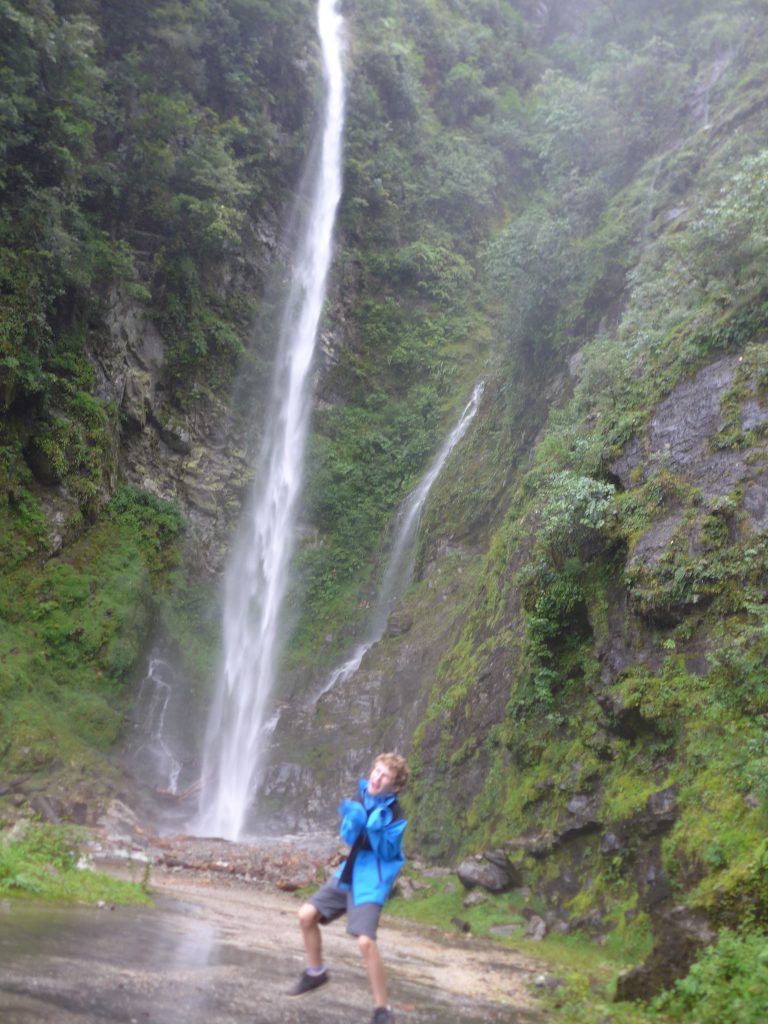
Then, like the water, we kept descending, down, down, down the side of the mountain.
I think this is a small goemba, built into the side of the mountain.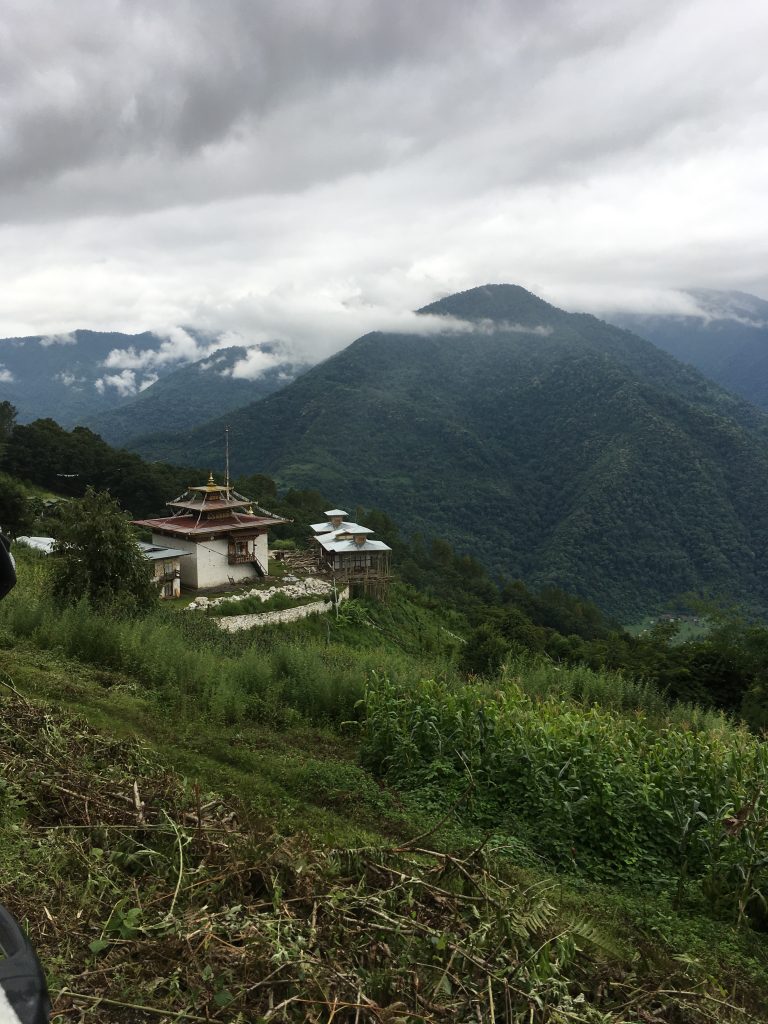 Kuri Zampa is the village marking the bottom of the valley—a descent of 3200 feet from the pass. The air is thick and moist here—as it is even in Mongar, though Mongar is significantly higher up the side of the mountains.
Kuri Zampa is the village marking the bottom of the valley—a descent of 3200 feet from the pass. The air is thick and moist here—as it is even in Mongar, though Mongar is significantly higher up the side of the mountains.
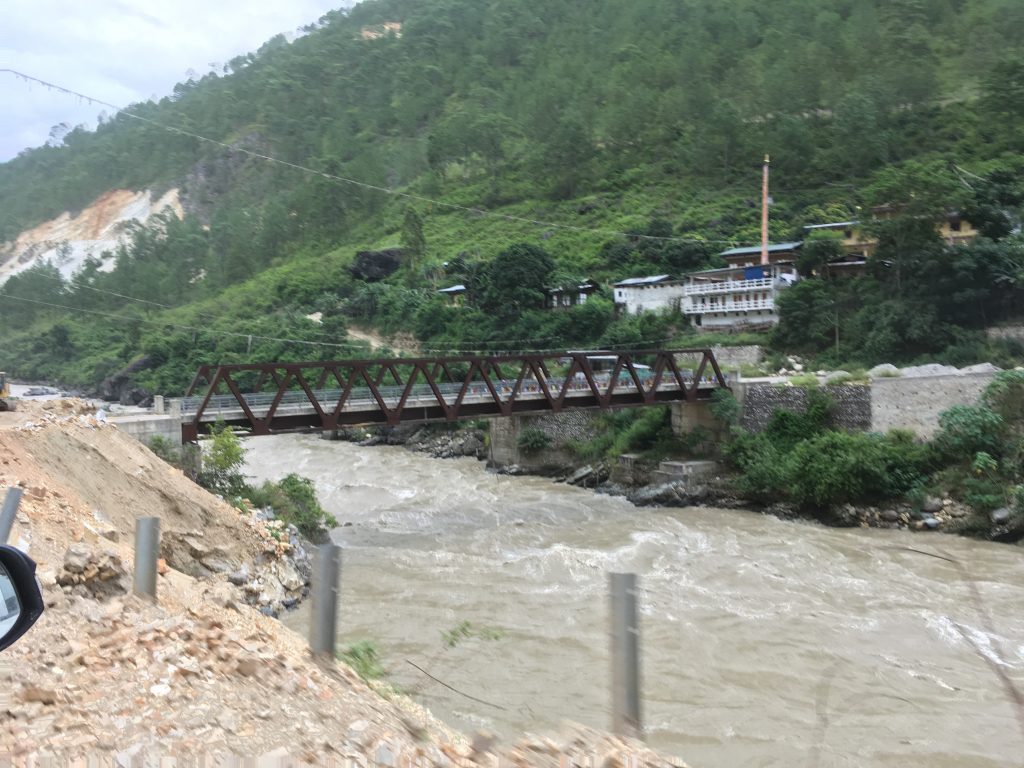
When we passed an archery match, we stopped to watch, mostly because Ugyen loves archery. When James took a photo, the archers did not look happy. In fact, I thought they looked as if they might use him for target practice.
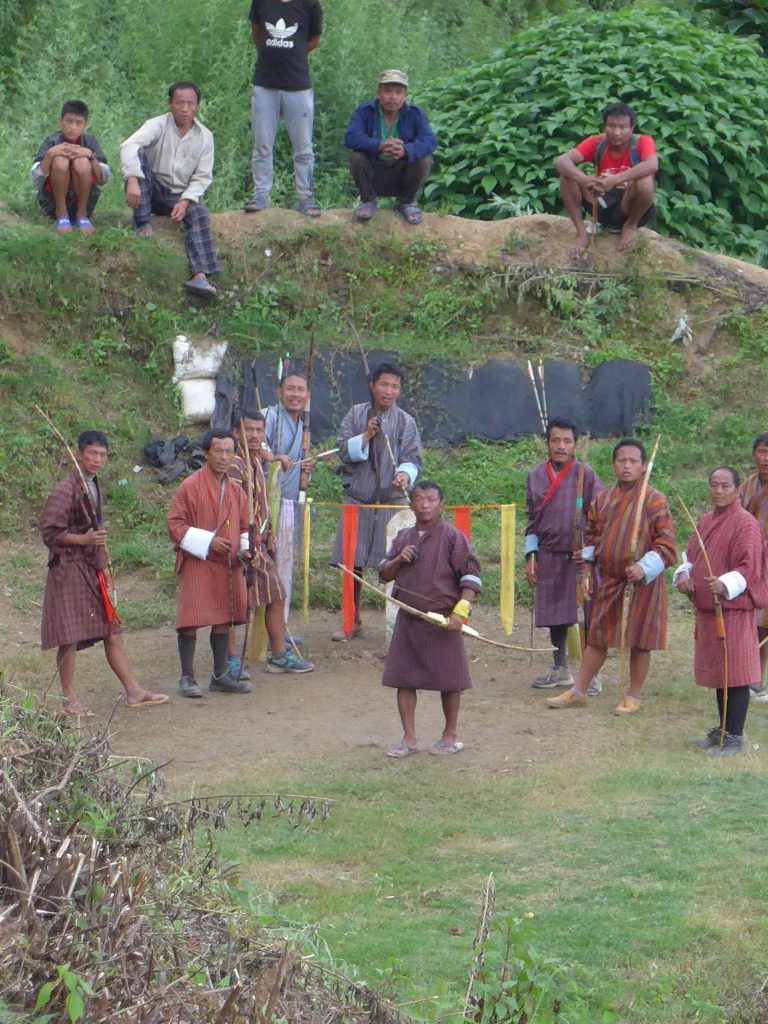
We reached Mongar around 6 p.m. Ugyen wanted to push on and reach Kanglung the same night. His time estimates were more hopeful than accurate. Kanglung was another hour and a half, maybe two hours. We could eat supper and continue. As we discussed the possibility of supper, his time estimate lengthened. Maybe three hours. We would be there by 9, 9:30 p.m. James wanted to arrive in the daylight, for psychological reasons. We held firm. Lonely Planet mentioned a bakery that served pizza. We wandered, weary, through the town looking for pizza. This turned out to be bread with some onions and tomatoes on top. We returned to the hotel for supper, where the chef was willing to improvise some pasta for our young travelers. He also sent out a complimentary plate of ema datse. Hot, but not unbearable. It was a kind gesture.
